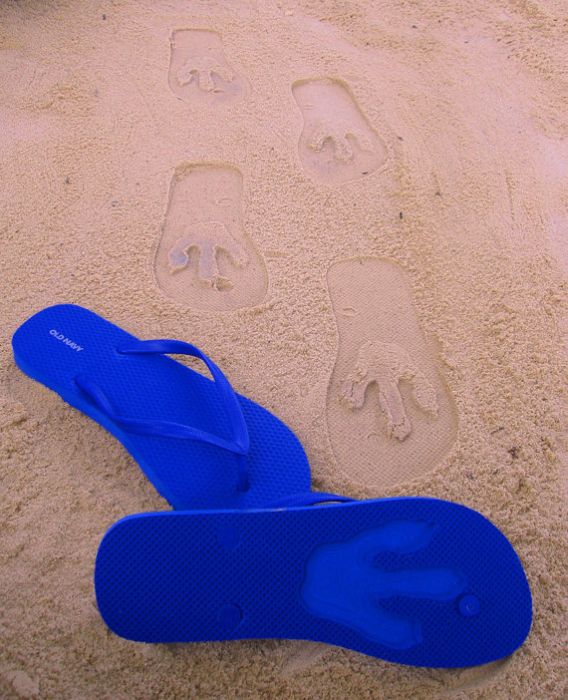|
|
Flip Side Flip Flops
|
Some flip-flops have a spongy sole, so when the foot hits the ground, it rolls inward and the sponge allows it to roll even more than usual. This is known as overpronation and causes many problems in the foot. Each time a foot hits the ground, the arch is supposed to be locked to absorb shock. But during overpronation, the arch opens and releases this locking mechanism, leading to problems such as pain in the heel, the arch, the toes and in the forefoot. Overpronation of the foot also results in flat feet, especially if flip-flops are worn throughout childhood and adolescence when the muscles, bones, and tendons of the feet are growing and developing. Exacerbating this, some flip-flops force a person to overuse the tendons in the foot, which can cause tendinitis.
Ankle sprains are also common due to stepping off a curb or stepping wrong; the ankle bends, but the flip flop neither holds on to nor supports it. The open nature of flip-flops also makes the wearer more susceptible to stubbed toes, and exposes the foot to the environment. The toe grip can be useful for preventing the foot from slipping forward in a convenient sandal, but flip-flops with bands across higher areas of the foot or the arch are recommended for support and keeping the shoe on the foot. Thong sandals are also popular with the same proportions and structures of flip-flops, but with the addition of a slingback or an ankle strap that holds and supports the foot in a stable position. Arch support is also found in many more expensive and better made flip-flops rather than the ubiquitous foam materials. Spending more on a better quality, better created shoe can influence the wearer's health and safety. Such shoes are also more commonly endowed with rubberized soles and better cushions.
In 2008, Auburn University researchers found that wearing thong-style flip-flops can result in sore feet, ankles and legs. The research team, who presented their findings at the annual meeting of the American College of Sports Medicine in 2008, found that flip-flop wearers took shorter steps and that their heels hit the ground with less vertical force than when the same walkers wore athletic shoes. When wearing flip-flops, the study participants did not bring their toes up as much during the leg’s swing phase, resulting in a larger ankle angle and shorter stride length, possibly because they tended to grip the flip-flops with their toes. This repeated motion can result in problems from the foot up into the hips.
|
|









